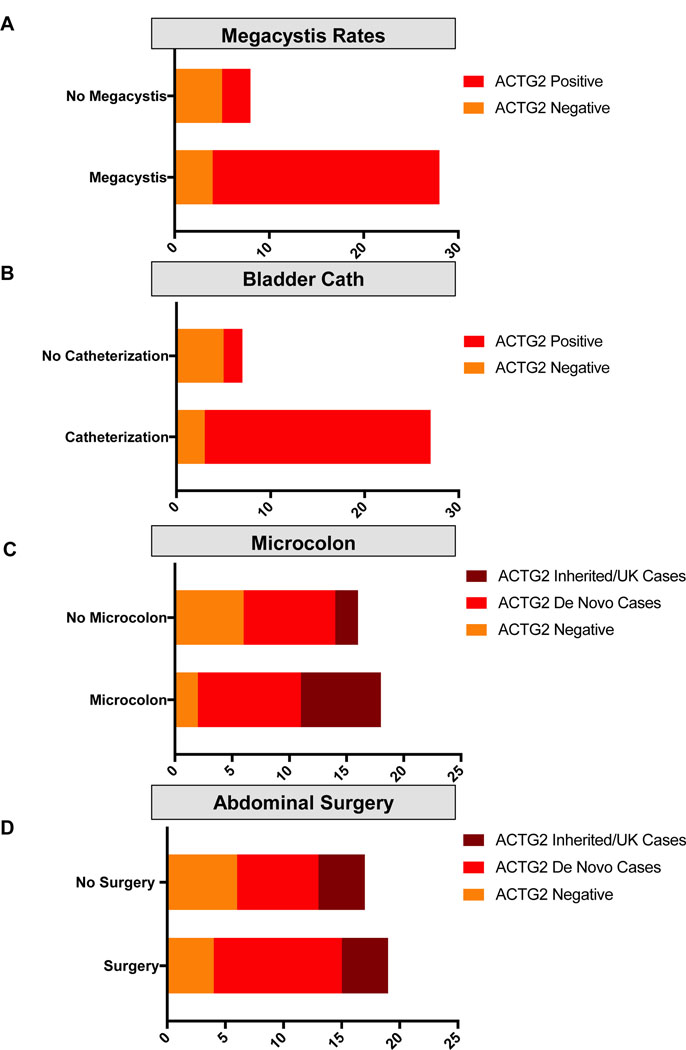Figure 2 –
Clinical features in the ACTG2-positive versus negative cases. (a,b) Genitourinary features (megacystis [a] and bladder decompression/catheterization [b]). Red represents cases found to harbor ACTG2 pathogenic variants. Orange represents cases without pathogenic variants in ACTG2. (c,d) Gastrointestinal features (microcolon [c] and abdominal surgery in the first weeks of life [d]). Brown represents cases with inherited ACTG2 variants or variants with unknown inheritance pattern. Red represents cases found to harbor de novo ACTG2 pathogenic variants. Orange represents cases without pathogenic variants in ACTG2.

